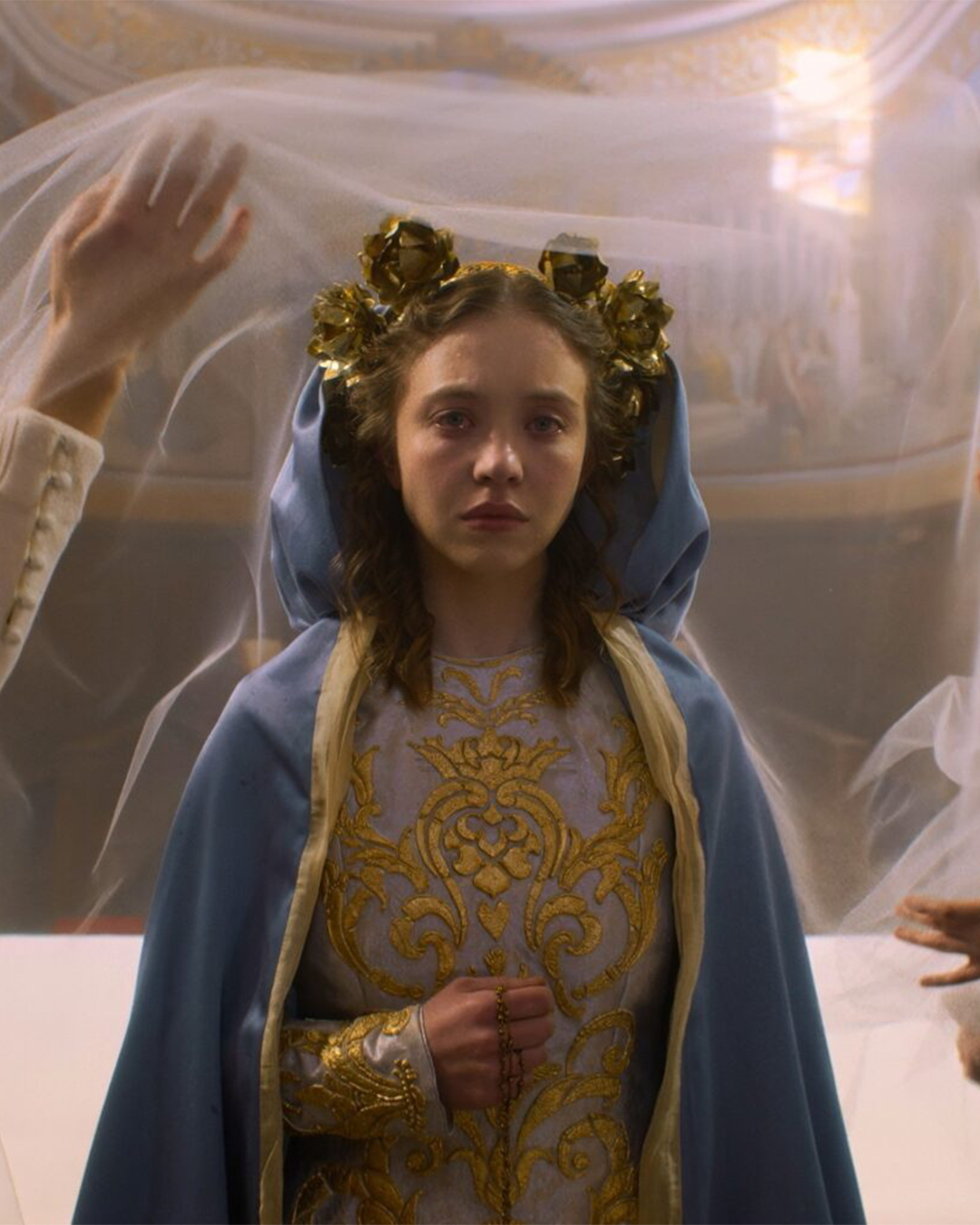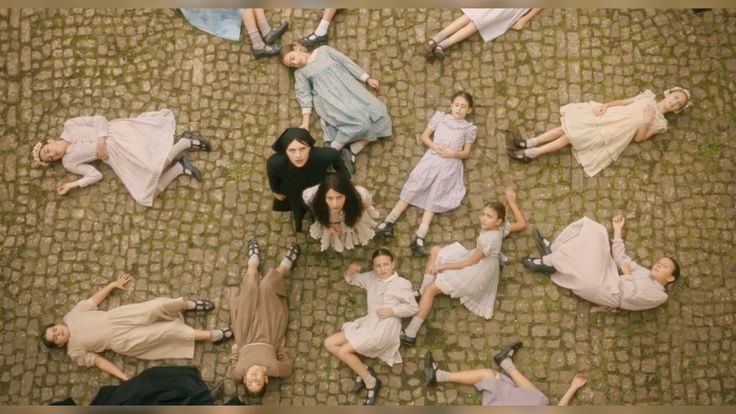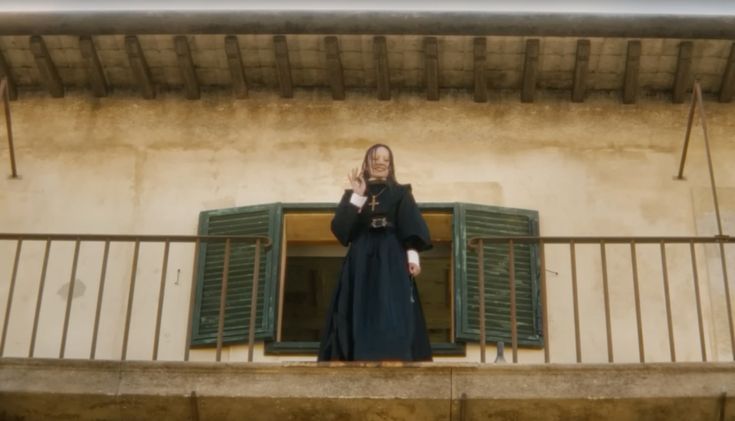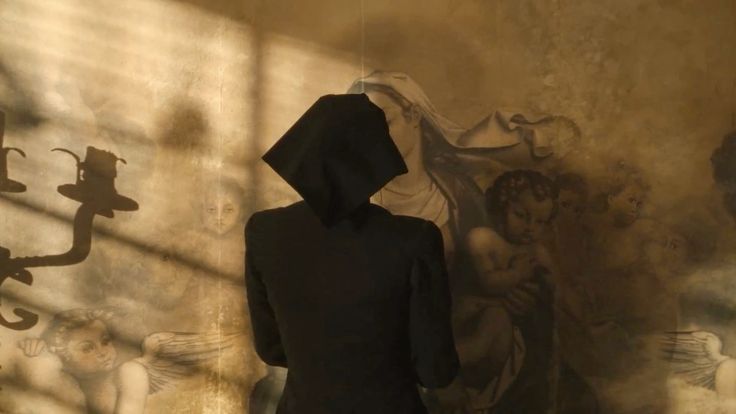
Syndey Sweeney, Immaculate, and feminist critique Exploring the figure of the nun in contemporary horror films, through the lenses of Jude Doyle's feminist critique

In the essay by scholar Jude Ellison Sady Doyle, Dead Blondes and Bad Mothers: Monstrosity, Patriarchy and the Fear of Female Power, the chapters are divided into the various - and few - categories in which society has always confined, and wanted, women: daughters, wives, and mothers, with the addition of "bad mothers" defining another negative and judgmental role reserved for them. In the book published in 2019, which immediately became an essential text for feminist studies, in addition to magnifying dynamics and constraints that have always dictated the conduct expected of women in the community, Doyle does not fail to summon enchanted creatures and beings (also monstrous for this reason) that have always been associated with women throughout history. Fairies, witches, angels, or riders of the apocalypse, even the most ordinary harbored a magical and subversive soul, subdued and oppressed by man and/or the state. Although religion often appears in the chapters of the book, from the fanatical and raving Christianity of Mrs. White, the mother in Stephen King's Carrie, to the long digression on exorcism and the key role of Regan in William Friedkin's The Exorcist, a character increasingly present in the entertainment - and thus cultural mythology - is not mentioned. The role of the nun in cinema, but also in series, has been a source of nourishment for feminist, sometimes queer, discourses, embodying a subversive movement, sometimes even making her pregnant to give birth to some chosen Jesus. Or his "enemy". In 2024, this is the case of two sisters: Sydney Sweeney in Immaculate - The Chosen One and Nell Tiger Free in The First Omen.
nell tiger free in the first omen (2024) & sydney sweeney in immaculate (2024) pic.twitter.com/dxDXGwe7QN
— joe (@mcumagik) June 1, 2024
The first glance tells us one thing right away: these nuns have a beauty considered unusual for the Church, sometimes off the charts regardless of any other standard. The beauty of the protagonists is immediately an element of diversification from the rest of the group, and usually, their companions in obedience, poverty, and chastity are also worthy peers in the genetic lottery that not everyone is lucky enough to win: from the Spanish Maria Caballero in The Omen to the Italian Benedetta Porcaroli in Immaculate, the latter with a prologue centered on Simona Tabasco, who has become an international star in addition to being nominated for an Emmy for the second season of The White Lotus. Those around them notice (a policeman, knowing about Sweeney/Cecilia's upcoming vows, considers it a "waste") and being a voice out of the choir accentuates the likelihood of accessing a higher knowledge, very often evil rather than blessed. This happens in Immaculate, but also in The Omen, enough to define the two films as "twin films", the kind of projects that, within a short period, are distributed in close temporal brackets, immediately noting the similarity between themes and characters. Certainly, saying that the two stories simply resemble each other is reductive, given the presence of almost identical characteristics - even the same locations in Italy are used, and Dora Romano appears in the cast in both films as the mother superior. In their overlap, Immaculate and The Omen offer a bold and feminine analysis of religion, on the one hand, taking one of the world's small and big screen stars, while on the other, pushing the sixth film of a franchise that started in 1976.
Spring brings Nunsploitation!! pic.twitter.com/h4jVkxysPJ
— Shawn (@ShawnMansfield) March 21, 2024
Produced by Sydney Sweeney herself, Michael Mohan's feature film revolves around the Marian figure of the protagonist Cecilia, described by some as a saint, destined to harbor the miracle of life without ever having had any carnal relationship with a man - a miracle that, in another messianic story, was what had never been seen in Blade Runner 2049, where even machines could become mothers. This time, a young girl carries a child, chosen for her devotion and for no other reason than that when she was little, she survived an accident that stopped her heart for seven minutes. Yet, as often happens in the tension between the erotic and the celestial, even a nun must adhere to the codes of horror and, along with beauty, accept the scent of desire that it exudes. Calling Sydney Sweeney to the cause is proof of this. After the pool drama in the second season of Euphoria, where we will always remember her in her tight fuchsia swimsuit, in Immaculate we see her wearing a semi-transparent tunic as she bathes in the washhouse with her sisters, engaged in rinsing and combing together. A very fine fabric, which, when in contact with water, sticks to the shapes and highlights them, whether it's the outline of a breast with a nipple peeking out or the belly announcing the progress of a pregnancy.
@neonrated The real horror is what’s growing inside her. IMMACULATE opens March 22. #sydneysweeney #immaculatemovie #horror original sound - NEON
Ambiguity is continuous in horror film nuns unless they veer into The Nun genre, and often it is precisely among novices that another pleasure is discovered apart from prayers. Benedetta showed it with Virginie Efira, whose sister Carlini, in addition to believing herself to be a bearer of salvation in Paul Verhoeven's film based on Immodest Acts: The Life of a Lesbian Nun in Renaissance Italy by Judith C. Brown, engaged in groping with the peasant Bartolomea and practiced autoeroticism with a finely carved Madonna statue to become a dildo. Like Sydney Sweeney, Efira is also a concentration of overwhelming femininity that hardly fails to touch the chords of the viewers. But if for the French actress, the discovery of the flesh happens in the context of an auteur dramatic work, Immaculate must deal with the horror matrix and the fact that, albeit transversally, Sydney/Cecilia must assume the role of the final girl, even without having sinned in a strict sense as much horror genre has taught us, remaining at the mercy of a pregnancy infused (more or less) by the Holy Spirit.Containing evil, after all, was exactly where Doyle was heading with her essay, the fact that it is always and in any case from a mother - here comes the paragraph on "bad" mothers - the basin from which to give life to the next destroyer, much more than to the Messiah. And that is what happens in The First Omen, where young Margaret, ready to take vows, will give birth to Damien who will reign as the son of evil for the rest of the saga. There too, her youth is crucial. And even more than in Immaculate, the temptation is induced by the Church itself, which to complete its work undresses the future nun of her modesty, leading her through the nightclubs of Rome, lost among the fumes of alcohol and the advances of a handsome Italian boy.
That The Omen is far more fascinating than Immaculate, despite belonging to a franchise and establishing itself as a prequel to all the other stories from the seventies onwards, is another story. But where the presence of a heavyweight star like Sweeney, whom we had just admired alongside another Hollywood sex symbol, Glen Powell, in the irreverent rom-com Anyone But You, the film by Arkasha Stevenson had to compensate with an originality that it actually managed to find. An unexpected and indie work full of visual ideas and expressionist frames. A nun who is also Medusa in one of the film's references, with a greater propulsive force compared to its sometimes soporific double, Immaculate; played by another beauty such as Nell Tiger Free, a face that Nicolas Winding Refn had already illuminated with his own neon lights in Too Old to Die Young and that M. Night Shyamalan had understood to be perfect for the anxieties of the serial universe of Servant. However, it's not a story that makes Sydney Sweeney a nun to tell us what the actress is trying to achieve in her career. Nor does the black-and-white habit leave much room for the wildest fantasies, from the iconic faces, old and young, of Paolo Sorrentino's sacred landscapes to the escapades of a group of nun-ninjas in the Netflix series, canceled after its second season, Warrior Nun. Undoubtedly, there will be more leading roles for the actress, as we await her in the third season of Euphoria and to see her directed by Ron Howard in Eden, in the plot-thriller Echo Valley, and in the biopic on Christy Martin, where she will portray the successful boxer of the nineties.















































